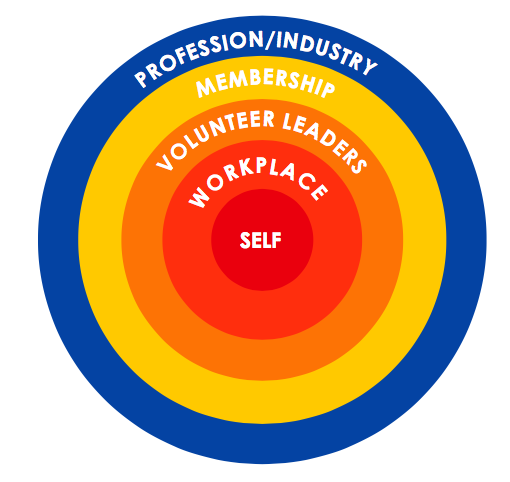For those of us who are “on the bus” on the value of genuine diversity and inclusion, this is the crux of the matter: how do we effectively walk our talk on D+I?
We have to work from the inside out, starting with our own selves, taking steps to uncover and combat our implicit biases, understanding where we do – and do not – have privilege, and answering the question “Now that I know, what will I do?”
To quote Include Is a Verb:
That is, how will you move from unconscious reaction to conscious responsibility? How will you use your privileges to help others and, at the same time, let them use theirs to help you in areas where you lack privilege?
Only then can we begin to move outward, to working on our associations as workplaces, then to our boards of directors and other volunteer leaders, then to our members, then to the professions and industries we serve.
I’d like to conclude this week’s focus on Include Is a Verb: Moving from Talk to Action on Diversity and Inclusion with another quote from the whitepaper:
There’s a poem that begins, “When I was a young man, I wanted to change the world.” As the man relating the parable lives his life, he realizes that was too grand a goal. He scales back to changing his nation, only to recognize that, too, as too grand a project. So he decides to focus on his town, and then his family. By the time he’s an old man, he realizes that the only thing he can change, the only thing he can control, is himself, but that when you change yourself, that impacts the people around you, and the people around them, and through that, you can change your nation and the world.
Start there. Pick one thing to change in yourself. Then think about one thing you can work on in your workplace with your colleagues. Then identify one program your association o ers that you can enlist your volunteers and members to help you transform. Small steps will add up to big shifts over time.
My co-author Sherry Marts and whitepaper contributors Joe Gerstandt and Jess Pettitt will be joining KiKi L’Italien for an Association Chat focused on Include Is a Verb on Tuesday, July 11 at 2 pm. You can register here.
And, of course, don’t forget to download the whitepaper itself at http://bit.ly/2peWwP0. It includes interviews with a DELP mentor/scholar team (Shawn Boynes and Desirée Knight) and with Cie Armtead, the current chair of ASAE’s D+I committee; sidebars from noted D+I experts Jessica Pettitt, Joan Eisenstodt, and Joe Gerstandt; and case studies of three associations that are doing outstanding D+I work for the audiences they serve (the Association for Women in Science, the Entomological Society of America, and the Geological Society of America).

